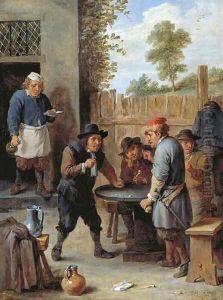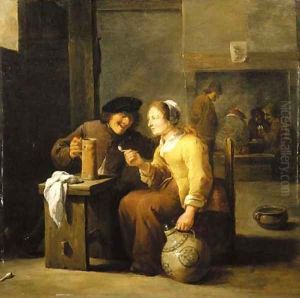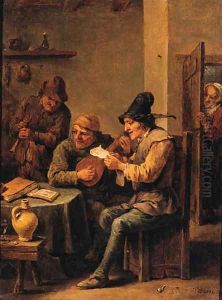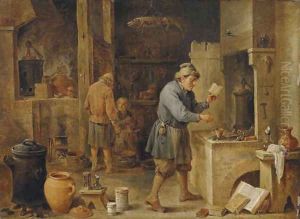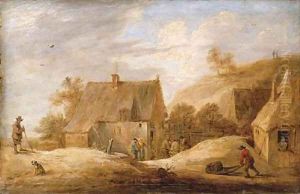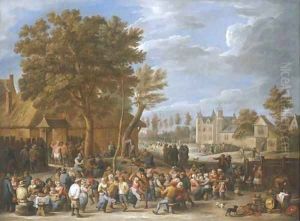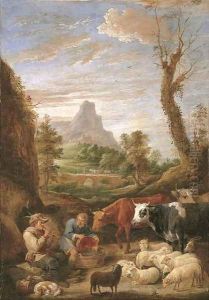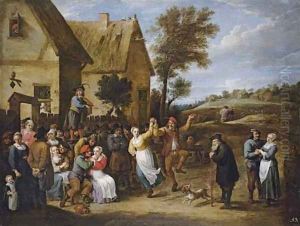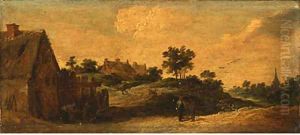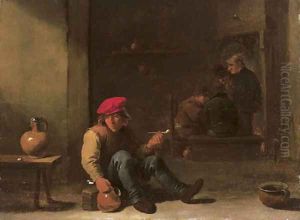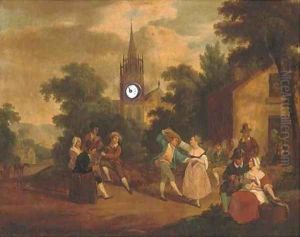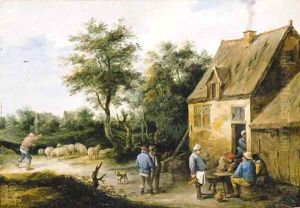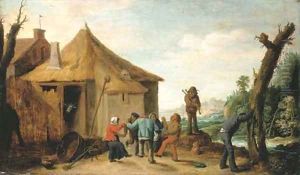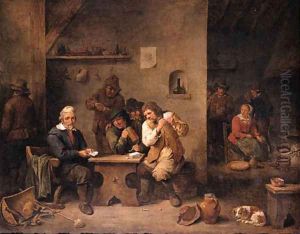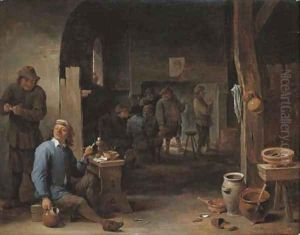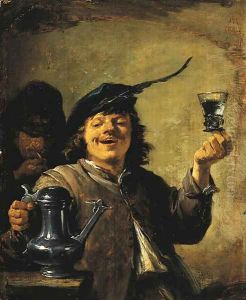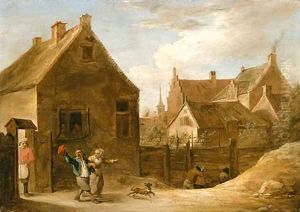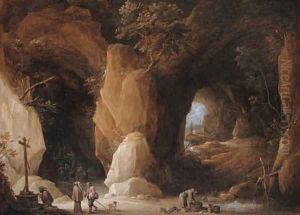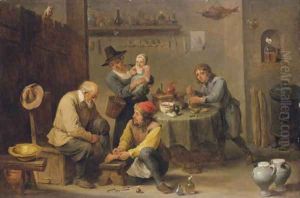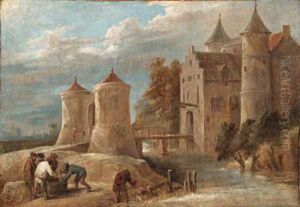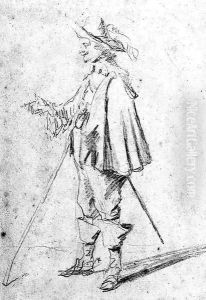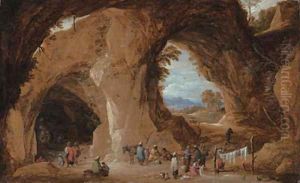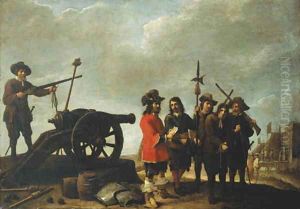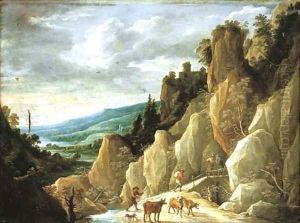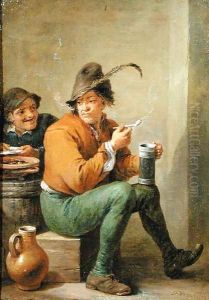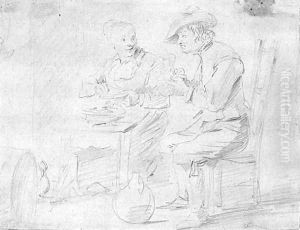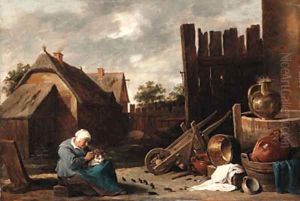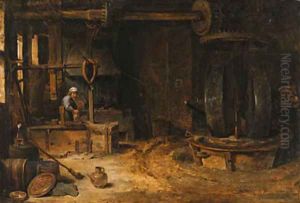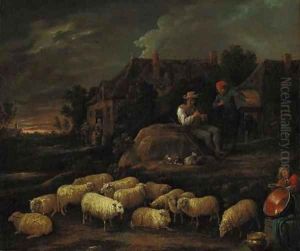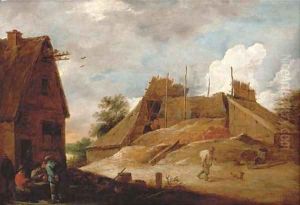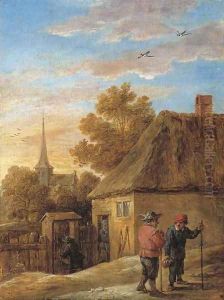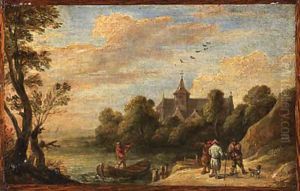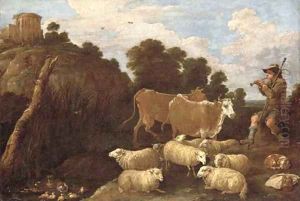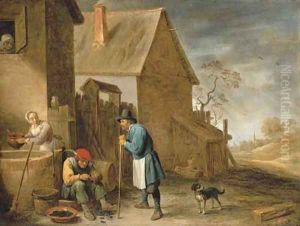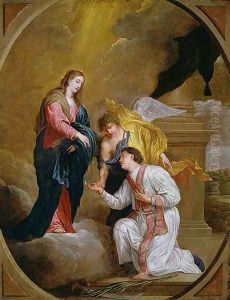David III Teniers Paintings
David Teniers III was a Flemish painter born in 1638 as part of the renowned Teniers family of artists. He was the son of David Teniers the Younger, who was one of the most prominent Flemish painters of his time. Following in his father's and grandfather's (David Teniers the Elder) footsteps, David III continued the family tradition of painting, although he did not achieve the same level of fame as his predecessors.
David Teniers III was primarily known for his genre scenes, landscapes, and history paintings. His style was heavily influenced by his father's work. He often reproduced his father's compositions, and therefore, his paintings have sometimes been confused with those of David Teniers the Younger. This has made it challenging for art historians to attribute some works definitively to David III.
Despite living in the shadow of his father's success, David Teniers III had a career that was notable in its own right. He worked in Antwerp, which was a vibrant artistic center in the 17th century, and he was a member of the local Guild of Saint Luke. His works were appreciated for their fine detail, lively character, and the ability to capture the essence of everyday life.
David Teniers III's paintings often depicted peasants engaging in tavern scenes, festivities, or rural activities, a subject matter that was popular among the Flemish middle class. He also painted religious themes and was known for his small-scale cabinet paintings which were sought after by collectors.
The artist's career and reputation were somewhat overshadowed not only by his father but also by his brother, Abraham Teniers, who was also a painter. Nevertheless, David Teniers III contributed to the Teniers painting dynasty's legacy, which had a significant impact on the development of Flemish genre painting.
David Teniers III died in 1685. While he may not be as well-remembered as his father, his works are still recognized by art historians and collectors and can be found in various museums and private collections around the world.
